Small gallery of Eastern Dragon Art, with excerpts on the artists Hokusai and Hiroshige.
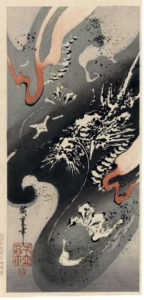
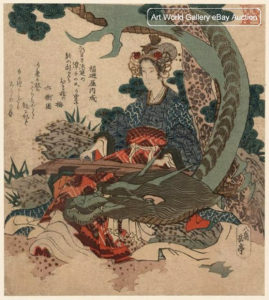
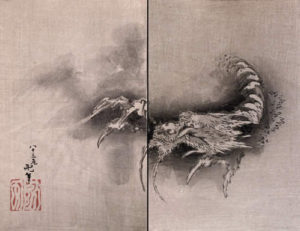
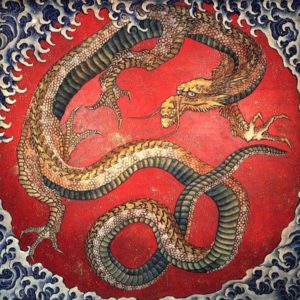
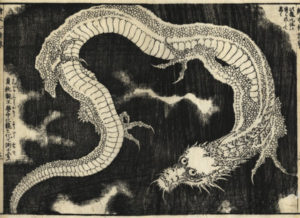
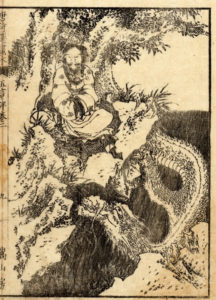
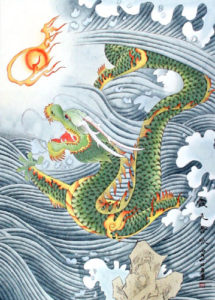
Hokusai and Hiroshige
Hokusai:
Katsushika Hokusai was a Japanese artist, ukiyo-e painter and printmaker of the Edo period.
Born in Edo (now Tokyo), Hokusai is best-known as author of the woodblock print series Thirty-six Views of Mount Fuji (c. 1831). Hokusai created the “Thirty-Six Views” both as a response to a domestic travel boom and as part of a personal obsession with Mount Fuji. It was this series that secured Hokusai’s fame both within Japan and overseas.
Hokusai is a master when it comes to conveying an almost fairy tale mystique in his images, such as in the image above with the dragon on the bright red background.
A point of technique that gives this dragon an almost meditative quality is how it seems to pop out of its red background. Part of this is due to the fact that the blue waves which frame the “red glow” make your brain expect purple even though no purple is actually in this painting.
Interestingly, yellow (the color of the dragon’s face and top scales) is a complementary color to purple which makes the face stand out even more. The background isn’t a pure red but lightens up behind the dragon’s face, giving a brightening effect.
References: Hokusai.org, Highlark: Hokusai Dragon
Hiroshige:
Hiroshige is usually connected with nature and landscape prints.
With Hokusai, he is considered the dominant figure of printmaking in the first half of the nineteenth century.
Ando Hiroshige was born with the name of Ando Tokutaro. He was born in Edo (Tokyo) as the son of a samurai and fireman.
His parents died when he was 12 years old.
In 1811, the young Hiroshige received a chance to join the famous Utagawa painting school. In 1812 he was formally allowed to take the name Utagawa. From then on he called himself Utagawa Hiroshige.
The first work by Hiroshige was a book illustration published in 1818, when he was 21 years old. Until 1830, Hiroshige created prints in the traditional style learned from his master Toyohiro Utagawa. His early commissions were book illustrations. Typical subjects of that time are kabuki actor prints, beautiful women and warrior prints.
Reference: Artelino


One reply on “Eastern Dragon Art”
[…] The Eastern Dragon art and Japanese Good Luck Dragon (Fuku Riu) pages have been transferred over to this new […]